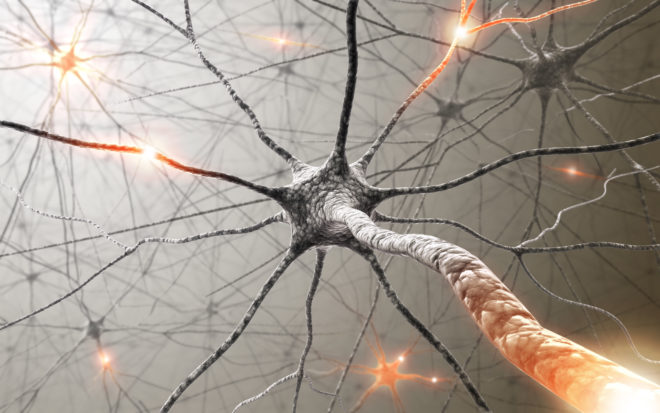A normal brain is not a particular network pattern but one that can reconfigure itself with experience.
Scientists have recognized for decades that children’s brains change as they develop and learn. Neurons or the nerve cells that make up our brains, receive stimulus from the world through the senses and are constantly growing out long extensions or cables in search of one another to form connections. These connections, called synapses, largely arise or strengthen when the neurons are sharing information or are active during the same stimulus. Cells that carry related information, therefore, become more strongly connected than those that carry unrelated information. Children are born with many more neurons and synapses than adults, initially arranged in a loose and imprecise network. Over their development from birth through adolescence, these synapses undergo a pruning phase where inon-functional neurons and synapses are lost and the ones that remain are sculpted into networks based on the information carried in each cell. It was perhaps this pruning phenomenon that led scientists to believe that adult brains were hard-wired and rigid, with no ability to reorganize or rebuild.
Yet such a point of view became hard to reconcile after a number of observations where Stroke victims recovered following brain damage. It soon became clear that the brain can re-form important functional connections that are lost through disease or injury. The reconfiguration that takes place in the brain following a stroke is much like the building of a new social network once you move to a new location. When you arrive in a new city, you have most of the same skills and resources you used to have, but your friends are not there, and perhaps people even speak a different language. Using the abilities you have, you develop a new network, and may even learn some of the new language. Your new network isn’t made up of the same friends as your old network, but it eventually comes to serve the same purpose. Similarly, when a network in the brain is destroyed, the remaining cells can forge new connections to regain the functions that were lost.
We know now that this ability, known as plasticity, does not apply only to injury. Rather, the activity of the brain is highly influenced by experience and continues to change with everything we learn and experience. Take for example a famous study of London cab drivers1. Researchers found that compared to those who did not drive cabs, or even bus drivers who drove the same route and did not have to learn to navigate London’s intricately connected streets, cab drivers displayed thicker tissue in the hippocampus, a part of the brain that is critical for understanding geometric space. It’s not that the brains of the London cab drivers are weird or abnormal, or that their brains are different due to some disease or disorder. The drivers are just doing things like the rest of us and wiring up in their own unique way as a result of the time they spend navigating a complex city. The drivers’ hippocampii have a whole lot of work to do.
Understanding the brain requires that we account for neurodiversity
The example of the London cab drivers helps to illustrate how different the brains of normally functioning people can be. Indeed a normal brain is not a fixed network or pattern of activity but one that can reconfigure with experience. These differences make understanding the brain challenging because we can’t rely on a single model to help us define what the ‘normal’ brain should look and act like.
Techniques that account for the neurodiversity of the population are likely to be more useful in understanding brain activity than those that create unrealistic models based on averages (read the related post The Myth of the Average Brain). Because a healthy brain can manifest in myriad patterns of activity, comparing each brain to itself at another time or in another context can provide more information than comparing one brain to another brain or a simulated brain.
1 Maguire EA, Woollett K, Spiers HJ London taxi drivers and bus drivers: a structural MRI and neuropsychological analysis. Hippocampus 2006;16(12):1091-101.
Dr. Nisha Cooch has a PhD in Neuroscience from the University of Maryland where she studied decision making. She is presently a fellow at the NSF


thank you for wonderful site and informative stuff sharing